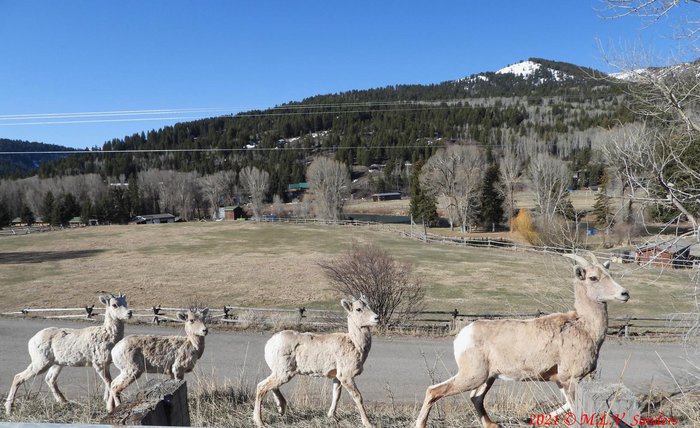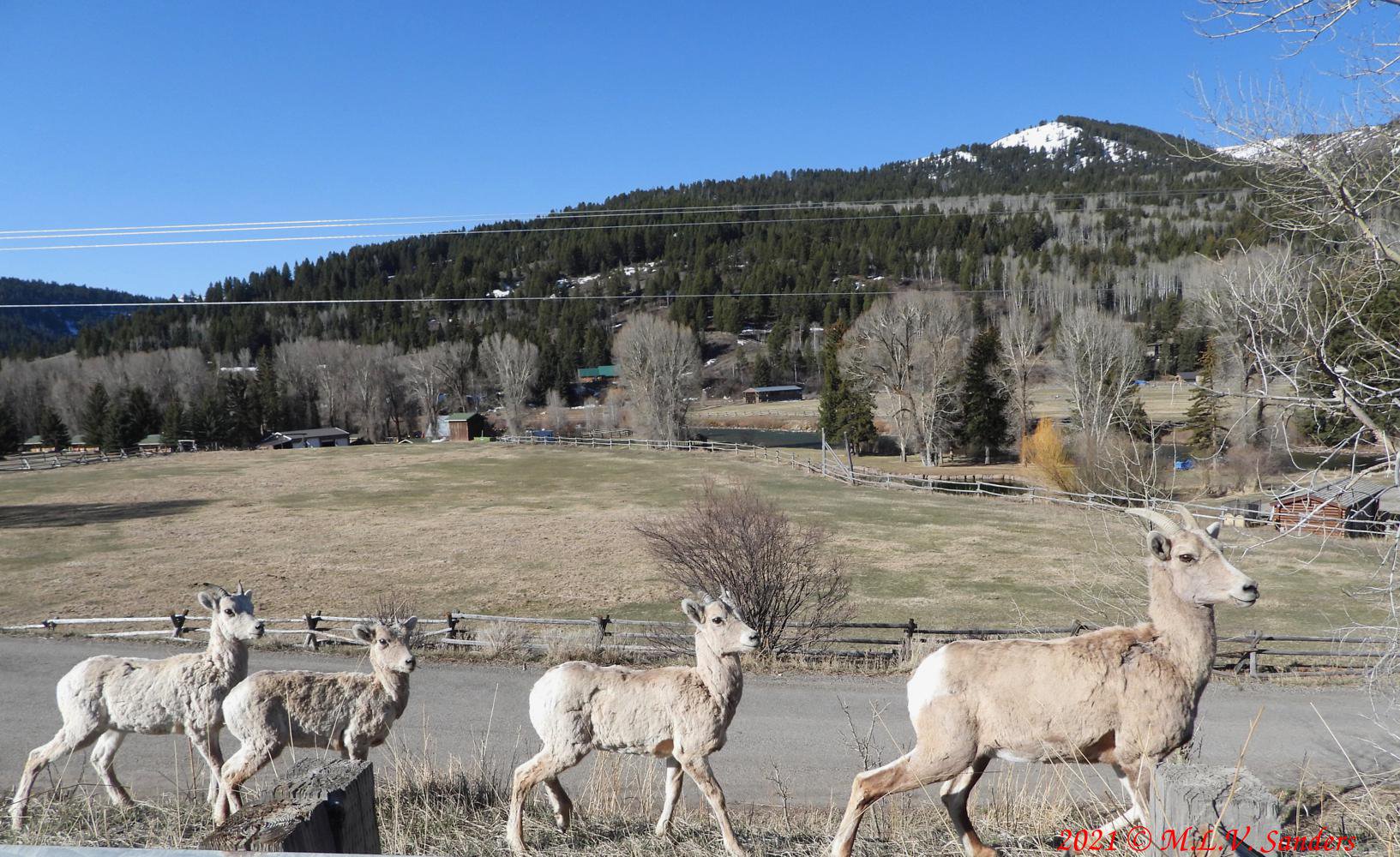Bighorn on US 191
April 30, 2021
revised: May 28, 2021
While driving along US 191 on our way to the Tetons on a mid-April morning, we were surprised to see a small herd of Bighorn sheep crossing the road a few miles west of Hoback Junction. The herd consisted of ewes (females), lambs, and a few young rams (males). After crossing the road the herd ascended steep grass covered slopes on the north side of US 191. Perhaps the bighorn herd had been attracted to the greener grass growing in the lower fields by the nearby Hoback River.

![A Bighorn ewe leading three lambs. All the lambs have small horns. The Hoback River is out of sight in the background.]()
![A Bighorn ewe leading three lambs. All the lambs have small horns. The Hoback River is out of sight in the background.]()
A Bighorn ewe leading three lambs born, most likely, in the previous spring. All the lambs have small horns. The Hoback River is out of sight in the background.
In this herd lead by ewes with no mature rams, it was helpful to learn about the different sizes and shapes of the horns of the bighorns. The small lambs had quite small horns. The horns of the ewes are slightly curved spikes_1_ _2_ _3_. The young rams had horns that were much thicker than the horns of the ewes, and curled markedly. Young rams stay with the herd of ewes and lambs until two - four years old after which they join herds of other rams.
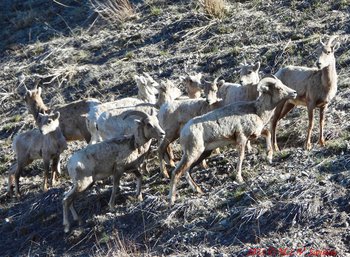
Bighorn sheep walking away from US 191 on the steep grassy slope above the highway. In the middle of April, at about 6000 feet elevation, the grass is just starting to turn green. Two obvious young rams are in the front with thick curled horns, the rest of the sheep appear to be a mixture of ewes and lambs.

The same herd of bighorn as before with the individuals rearranged.
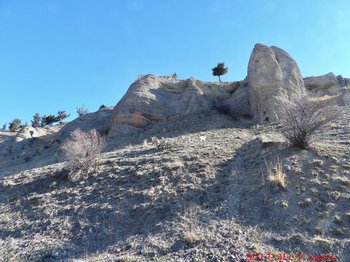
A view, without benefit of telephoto, of the bighorn herd on the bluff above US 191.
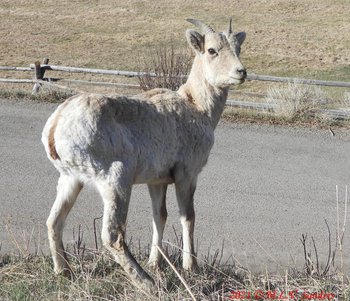
A small bighorn ewe looking up at traffic on US 191.
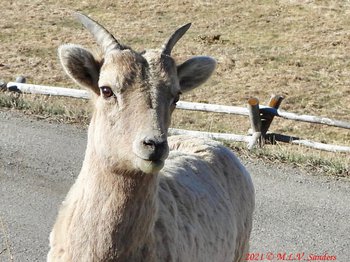
If you look closely at the eye of this bighorn ewe, you will the the pupil of the eye is much wider that it is high.
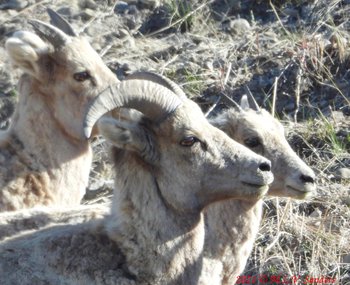
Three bighorn sheep. The one in the front is a young male.
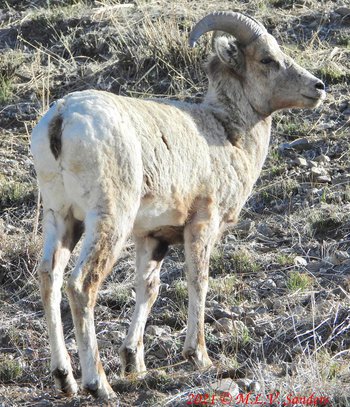
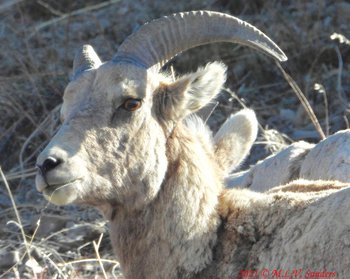
Notice the shape of the pupil in the eye.





